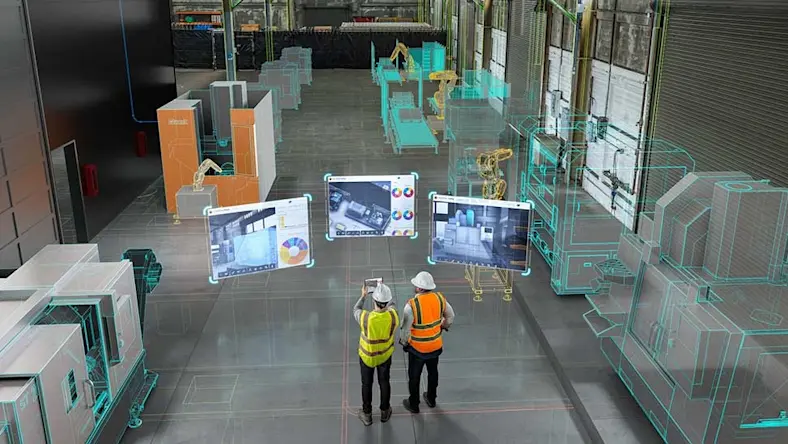& Construction

Integrated BIM tools, including Revit, AutoCAD, and Civil 3D
& Manufacturing

Professional CAD/CAM tools built on Inventor and AutoCAD
Allison Scott, Head of Construction Integrated Marketing, Autodesk: Working in construction, there really is nothing like walking down the street and seeing a building project that you had a hand in contributing to come to life.
My name is Allison Scott. I am the head of construction integrated marketing at Autodesk. That means I support the business strategy and the marketing team with identifying and investigating how technology is going to be impacting our construction customers on their jobsites every day.
One of my first memories is working with my dad on a deck project. While my dad was working on the deck, I found myself building my own tower with open lumber and creating just a mess. But I loved the whole notion of putting something together.
I always had a passion for technology. It’s something that’s been innate in the way I’ve grown up. When I saw the convergence of technology in the built environment beginning to occur in the architecture and the design field—and then, by default, construction—it was something that I was just naturally drawn to.
The Internet of Things, also called IoT, is a blanket term that encompasses a vast array of web-enabled smart devices. These devices, they’re sensing environmental pressures or temperatures or even biometric changes in our bodies. These sensors are also connected to the Internet. Not only can they capture a whole bunch of data, but they can talk to each other, and they can give us insights about what to do next. Just like the smart watch senses your daily activities and gives you insights into when you should walk, meditate, or drink a glass of water, IoT on construction sites are also identifying risks before they happen. This could be anything from poor air quality on a floor to a worker getting too close to a piece of equipment. It can potentially increase safety.
One of the ways it can do that is by using presence detection to understand and indicate exactly where individual workers are or where or materials are or where equipment is. The notion here is that we could increase individual environmental awareness. If you are a construction worker walking through a construction site and you get alerted that a piece of equipment or a truck is about to drive by, you’re going to adjust your movements for that moment. These kinds of insights are extremely powerful for the individual worker to keep them of harm’s way. It’s also extremely powerful for a general superintendent or a safety director so that they can have a better visibility into their jobsites for that day.
Industrial IoT for the construction site is growing rapidly. There has been an increased interest and enthusiasm just to get more data onto the site, but data alone isn’t enough. We also need really actionable information. In order to get actionable information, we also need more sensors on the site. That means things like sensors embedded in materials or intelligent tools telling us how a drill bit is performing. Concrete sensors—you actually embed concrete sensors into the concrete-pour process so you can understand and predict a higher quality of the curing and drying process, which can ultimately compress the schedule.
Think about the problems that you’re trying to solve every day on a construction site. Would having more visibility into what your workers are doing or the work that was done for the day be helpful to you? All of those things right now require a lot of time and energy from the human experience to understand, walk around the jobsite, and translate. Those things can be reduced. The time could be reduced, and the impact can be reduced if we have more data at our fingertips.
In the future, not only will IoT devices be used on the construction site, but they’ll be used throughout the building operations to give us continued insights on how that building is performing. There’s so much opportunity for IoT to support construction safety, quality, efficiency, productivity, and sustainability.
AECO
Image courtesy of Véronique Paul/Bouygues Construction.
AECO
Executive insights


